Building Gaming PC: How to Choose the Right Hardware?
How to Build a Gaming PC?
There’s never been a better time to building your gaming PC from scratch. Lots of advantages are tied to taking this move. From customizing the components that go into your PC to configuring a rig that can conquer just about any modern title, you can look forward to improved performance and dominating the competition.
That said, it is not without a few but major considerations to make.
- Budget
Perhaps the most important of all is knowing how much you want to spend while building your PC. Remember you will have to choose all the hardware components. Some you can find on a budget but others you will have to save up big if you don’t want any performance glitches.
If your income is above average, you can start choosing hardware from your favorite brands right away. But if you have an average income, saving for a couple of months should suffice. For below average incomes, you may want to save for up to a year to get some of the best components for your PC. But it’s worth compared to buying a gaming laptop.
- Which Hardware Do You Need?
We’ll go through how to choose each of these components.
- CPU/processor
- CPU cooler and Fans
- Motherboard
- GPU/Graphics Card
- Memory/RAM
- Storage
- Power Supply Unit/PSU
- PC case and Motherboard I/O shield
- Sound Card
- Gaming Peripherals (monitor, keyboard, mouse, headphones, etc.)
1. Central Processing Unit (CPU)

The most essential component in your gaming PC is the CPU, well after the GPU. Known as the brains of your computer, it is responsible for processing all the data.
The faster it is, the better it will be when combined with a good cooling system and graphics card.
It is not a must to get the highest-priced CPU since GPUs do most of the work in a gaming PC. As such, saving up for a high-end graphics card will do you good. Clock speeds and core count of any CPU will give you a good idea about the performance you are getting.
- Intel vs. AMD
It’s a clear warfare between these two major CPU brands, and the fight is getting even more interesting this year. Until 2017, it was a no-brainer that Intel was your go-to for serious gaming. But enter AMD’s Ryzen which offers budget-friendly CPUs with decent clock speeds, a wide array of cores, and thread counts.
Intel, on the other hand, offers multithread counts, high clock speeds, and incredible overclocking.
If you are looking to build a budget PC, AMD is the way to go, but for midrange and high-end gaming PCs, Intel got your back.
Features to Consider in a Gaming CPU
- Gigahertz/Clock Speeds
This refers to the number of cycles your CPU can run in a second. The higher the clock speed, the more instructions it can execute every second.
- Cores
The core of the processor executes the threads. There are single-core CPUs, dual-core, quad-cores, and so on. A CPU with a single core means it has only one processing unit. But a dual-core has two. And it’s as simple as that.
A CPU with more cores is advantageous since it will handle more tasks at a time. But then comes the issue of hyper-threading. This is Intel’s way of implementing simultaneous multithreading (the computer executes multiple threads concurrently).
Simply put, instead of a single core CPU performing one task at a time, the operating system sees two cores which in turn enables faster execution of a program.
You will find that if two multi-core CPUs have similar clock speeds, but one has hyper-threading, the hyper-threading CPU will perform better.
2. CPU/GPU Cooler
Improved performance comes with lots and lots of heat. You don’t want to depend solely on the cooling system supplied by the CPU manufacturer.
Liquid vs. Air Cooling
Air cooling is the most popular since it requires the least maintenance and is adequate for most games.
Air coolers consist of after-market CPU coolers and extra fans for the chassis. You will need to find out the correct size fans for your PC before bringing home cooling fans. The idea is to find a fan that will drive the most air onto a heat sink to bring the temperature down.
Liquid Coolers are not noisy like their air counterparts. They may be a little complicated to install, but they have a higher performance. A liquid cooling system is applicable for serious overclockers and pro gaming where you can’t risk a hot PC slowing down your moves and progress.
3. Choosing the Motherboard
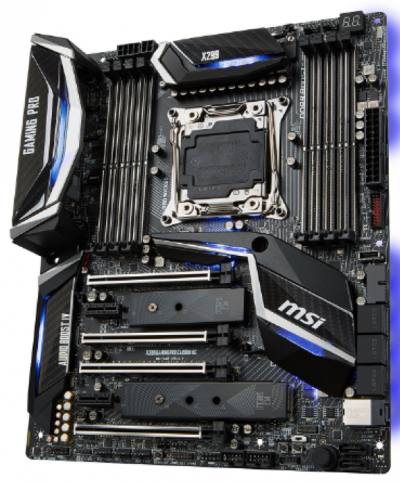 The next most important hardware on our list is the motherboard. It is the base where all communications are undertaken. From the graphics card to the SSD and RAM, it serves the sole purpose of ensuring every task is undertaken.
The next most important hardware on our list is the motherboard. It is the base where all communications are undertaken. From the graphics card to the SSD and RAM, it serves the sole purpose of ensuring every task is undertaken.
The motherboard influences the type of CPU you can install and how many other components you can include depending on the size or format. Motherboards are either chipset or socket type. The socket type should not worry you but the chipset should since newer AMD and Intel CPUs are not all backward compatible with older chipsets.
To make it easier for you all you need is to check out a motherboard with LGA 1151 socket and Z170 so you can pair it with any mainstream AMD or Intel CPU.
- Motherboard Form Factor
Apart from matching the motherboard socket type to your CPU, there’s also the consideration of size. This is because you cannot pick just any case for your CPU.
Here, you are looking at mITX, mATX, and ATX form factors. ATX is the largest of the three. It is ideal if you are building a big PC or one with the possibility of upgrading in the future. An ATX motherboard will precisely need an ATX case.
mITX and mATX are small and are also common. Only if you want a compact PC should you go for these motherboards.
4. Graphics Card

All the magic of gaming happens on the graphics card. It is without a doubt why it is the most important and the most expensive while building a gaming PC.
These are PCI-Express video cards that fit into a PCI-Express slot on the motherboard.
A fast graphics card gives you incredible visual appeal as well as running games smoothly without hiccups. Most low frame rates result in unplayable games because of the stutter.
Whether on a tight budget or not, you will want to buy the best graphics card for your PC. It is a matter of balancing performance and money to get the best settings that will work with your CPU.
- AMD vs. NVIDIA
You have the choice to go with NVIDIA or AMD. These two companies manufacture the GPU, but you will get the actual graphics cards from companies like MSI, Gigabyte, Asus, and PNY.
AMD has budget choices while NVIDIA has high-end GPUs. Not to say that AMD has inferior graphics cards, in fact, these two major companies are always on each other’s neck regarding the technology they are dishing out in terms of graphics except if the card is factory overclocked.
You will find differences in their RAM, drivers and standard support, and the maximum resolution they can produce. You will also see a ton of difference in the cooling effectiveness between the brands you pick for your specific graphics card.
- Choosing a GPU based on the Games you Play
More demanding games require graphics cards that will handle intense graphics. As such, you will not want to use a low-end GPU if your favorite titles are Battlefield 1, PUBG, The Witcher 3 and VR games. But an entry-level model will not hurt if you play Minecraft and League of Legends.
- Monitor Resolution and Refresh Rate
Monitors with high resolutions need high-end GPUs and vice versa. Only a top-quality GPU will render the proper pixels on a 4K monitor. But don’t hold back if you have the money for an expensive GPU but have a 1080p monitor. You can always upgrade the monitor instead of spending twice when you want to perform PC upgrades.
The refresh rate of your monitor is just as important. The more frames per second, a GPU has to render; the more work it has to do. You will still want to match a high refresh monitor with a high-end GPU.
You need to see that your GPU is compatible with the power supply as they are some of the most power-demanding on any gaming PC.
5. RAM (Random Access Memory)

Desktop memory/RAM is one of the easiest to install and upgrade. How much memory you need is dependent on the kind of system you are building. A budget gaming system can require only DDR4 8GB if you are not into the most graphic intense games, but need to open multiple browser tabs and programs.
8GB of RAM is enough to play games like Battlefield 1. You can always upgrade by adding sticks to the DIMM slots on your motherboard.
16GB is for large budget gaming PCs. Here, you will be able to play at the highest settings while having open YouTube and online forum tabs. With 16GB of memory, you can say goodbye to stuttering and out of sync games.
- No Higher than 32GB
In gaming, you will want to steer clear of 32GB RAM. Contrary to it may seem, more memory is not a wise investment when building a gaming PC. You don’t want to shell $400 while you could spend half the amount and get good return in terms of improved gaming performance on 16GB RAM.
Not to mention, 32GB RAM is reserved for servers and workstations.
- Overclocked or Not?
Every brand lists their DDR speeds. You will find that DDR4 runs at a minimum rate of 2133MHz on Intel and 1866MHz on Ryzen motherboards. A fast frequency guarantees faster memory processing.
Rated speed is not the only consideration for memory performance. Latency also plays a major role. You will need low latency for the system to execute processes.
6. Storage: Solid State Drive vs. Hard Disk Drive

The need for more space is as high as ever in the wake of large memory games like Ghost Recon Wildlands that takes a generous 64Gb of space and Call of Duty World War II at 90GB. Not to mention dealing with weekly updates, digital pictures and lots of files all needing space in one PC. Whether you’ll be using your computer solely for gaming (which we rarely do) or you want a do-it-all PC that is top of its game, you will need to take a serious look into your space needs.
In gaming, it is not that difficult to figure out whether you need an SSD or HDD.
SSDs have been the first option in recent years owing to their high read/write speeds compared to their longer-lasting and cheaper HDD cousins.
An SSD is up to three times faster than HDD which affects gaming and system performance. Also Solid-State Drives last in the same condition for a decent period. But they have a short lifespan since they last half as long as HDDs.
What I mean is hard disk drives though they last longer, they depreciate in quality with time while SSDs retain their performance over their lifespan.
In terms of capacity, both HDDs and SSD can have up to 8TB in today’s market. But it is significantly expensive to buy over 2TB of SSD.
When looking at the noise levels, SSDs are also at an advantage since they do not have any moving parts. Hard disk drives are noisier as they age because of the depreciation in the various moving parts.
For any gaming PC, the minimum 500GB up to 1TB for a gaming PC is recommended. It is much better than having 250GB SSD and 1TB HDD combined. With SSD, you can expect faster transfer speeds, lower power consumption, and silent gaming.
- PCI-E SSDs
Don’t forget to pick PCI-E NMVE SSD. These are the latest and fastest compared to previous SATA Solid-State Drives. They are in the form of M.2 drives that can fit in tight PCI-E slots or PCI-E interface on motherboards.
You can also find an M.2 SSD that can use the SATA interface, but it all depends on the kind of motherboard you will be using. These cards do not require a cable when connecting to the motherboard. They give you speeds of up to 2000mbs on some drives.
7. Power Supply Unit(PSU)
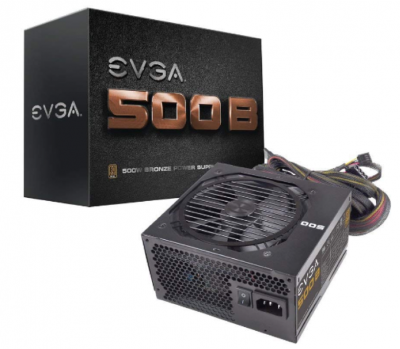
This is an area you do not want to cut costs. One, the more demanding games you play, the higher the power supply you will need. You will want your PC to be as stable as ever in whichever game you throw at it.
Second, it is useless to have a high-end graphics card and CPU without the power to drive them. The last thing you want is getting the wrong wattage or risking ruining your PC.
You’ll want to consider the power-efficiency of your PSU which brings us to the 80+Power Efficiency. Any PSU rated to be efficient draws the correct amount of power leaving no room for wastage whether your computer is actively being used or not.
Types of 80+ Power Efficiency Units
- 80+ White: 80% power efficient
- 80+ Bronze: 85% power efficient
- 80+ Silver: 88% power efficient
- 80+ Gold: 90% power efficient
- 80+ Platinum: 92% power efficient
- 80+ Titanium: 94% power efficient
When building a gaming PC, 80+ Bronze, 500, 600, or 750 watts Power Supply Units are more than sufficient. They give an 85% power efficiency with the capability of saving five units per 100 watts consumed. They can drive high-end graphics cards and give you peace of mind if you ever need to add a graphics card.
You also get good cable management and a warranty of up to five years.
8. How about the Case for your Gaming PC?
 The ultimate consideration in a PC Case is the room you need for all your PC’s hardware. Other than the form factor, you will also need to consider the case compatibility and clearance.
The ultimate consideration in a PC Case is the room you need for all your PC’s hardware. Other than the form factor, you will also need to consider the case compatibility and clearance.
- Size
The case supports a specific motherboard form factor. These include Standard ATX, Extended ATX, m-ATX (micro-ATX), or m-ITX (mini-ITX).
Large cases can fit the small-size motherboards which also plays in with them being compatible. You will find that mid-size cases can hold standard ATX motherboards, but you will have to look at the specific dimensions before deciding whether it will fit your specific motherboard.
Matching the dimensions and maybe leaving a little room for clearance is the only consideration you need to make concerning size.
- Case Drive Bay Compatibility
Compatibility comes in play when you bring other components like the length of the GPU, the height of the cooler, and the size of the cooling radiator into play.
Basically, you will need to go over every spec and see which of the available cases will fit your PC. This is mostly because high-end GPUs are usually longer than budget GPUs. You may also find you have a taller than average heatsink and or an oversized liquid cooling radiator.
Today’s PC cases come with lots of bays to meet most users’ needs. It is just a matter of determining whether it will go with the components you choose.
- Cooling Efficiency
An often overlooked factor is the cooling effectiveness of a case. A high-quality PC case will include fans that help to dissipate heat to the outside instead of relying solely on the PC’s interior cooling system.
Other factors to consider when choosing a gaming PC case include the ability to adjust the fan speed, ample USB ports, dust filter, cable management, and having a tool-less design that does not require using a screwdriver to complete the installation process.
9. Sound Card
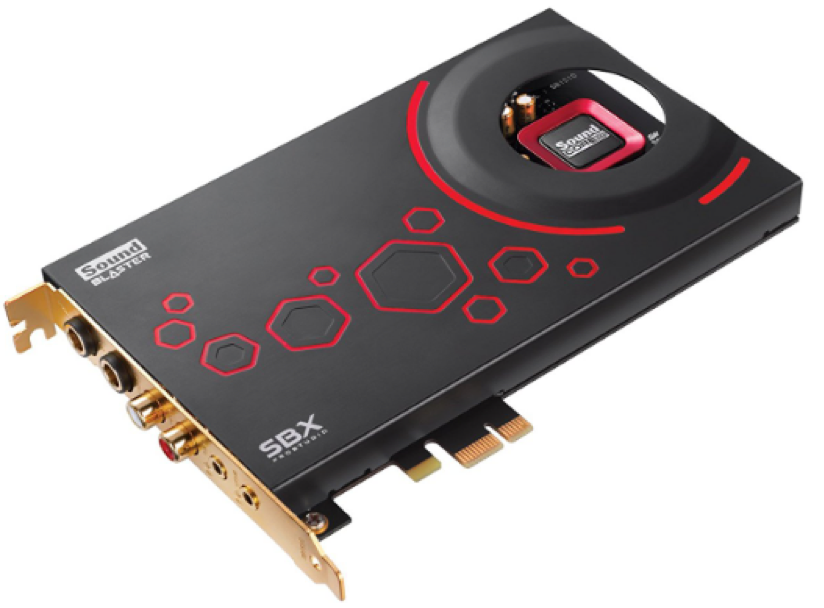
This is a totally optional component. If you need complete surround sound or are building a luxury gaming PC, you may opt to include a sound card.
Your motherboard will already have dedicated chips to handle audio output and input, that’s why most gamers will not need to go looking for a sound card especially if you are on a budget.
You will want to check if the sound card is compatible with the PC you are building and more so on the PCI-E slots on the motherboard.
Features to Consider in a Sound Card
- 1 or 7.1 Channels
These are the two options for gaming. You will need to use compatible speakers to experience the extra channels fully.
- Signal to Noise Ratio (SNR)
A high SNR is required as it indicates the power of the sound card to rise above static and background noise to give you memorable listening experience.
- Total Harmonic Distortion (THD)
This feature measures sound distortion. You will want to be as close to zero as possible.
- Sample Rate
Measured in KHz, you are looking for a high number as it also measures the quality of audio you are getting.
GAMING PERIPHERALS
After you have chosen the hardware that goes into the PC, you will also want to select the accompanying peripherals that go hand-in-hand with your gaming PC. Here we are talking about the monitor, keyboard, mouse, mouse pads, microphones, routers,and headsets.
1. Choosing a Gaming Keyboard
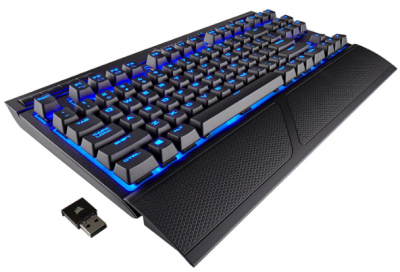
A gaming keyboard is vital in completing your gaming rig setup. You’ll have to consider the type of games you play as well as the pricing, kind of keyboard, customization, and other extra features that make it worth your while.
- Mechanical vs. Membrane Keyboards
There is a reason pro gamers love mechanical keyboards. Designed with switches that provide less actuation, players find them satisfying, and it is hard to miss a click. They make input fast and easy. Typists also love them, but we are all about gaming today.
- Cherry MX Switches
Mechanical keyboards do not feel mushy because they do not use rubber domes like membrane keyboards. They use Cherry MX switches which are determined by the color. There are black, blue, brown, red, and white. Red switches do not have a click on actuation. They are mostly preferred for FPS games.
Brown and blue have medium actuation force, but blue switches are more clunky. They play well with RTS, MOBA, and MMO games. Brown switches have a small bump on actuation, and they play well on most games except FPS. Black switches have a high actuation force. They can also play all types of games.
- Durability
Mechanical keyboards are also known to last longer. You will find the switches rated for up to 50 million clicks while membrane models can barely make it to 10 million. Not to mention, the heavy build which prevents them from constantly shifting as you are typing.
But they are noisier than membrane keyboards. It doesn’t bother most gamers because you are already in a chaotic gaming environment, the rants on your keyboard is probably the last thing on your mind.
- How much for a Gaming Keyboard?
Gaming Keyboards vary from below $100 to above $150. Those below $100 are mostly tenkeyless, membrane, or older mechanical keyboards.
From $101-$150, you have midrange keyboards that are used by a majority of players.
Above $150, you are looking at just about every imaginable feature you would like to see in a high-quality keyboard.
- Any Extra Features in a Gaming Keyboard?
Talk of having a keyboard specified for your type of gaming. Finding extra macro keys is a nice touch to any gaming keyboard since they successfully help to conquer every mission in action and adventure MMO, FPS, and RTS games.
You may also want to have RGB lighting as you can allocate different lights to different keys. This way, you are always sure which key you are pressing just by the light emanating from the key.
2. Gaming Mouse
You will want to pair a gaming keyboard with a nice gaming mouse. There is an amazing variety of gaming mice on the market, all with various accuracy rates, tracking speeds, and all the tech extras like RGB lighting and macro keys.
- Know Your Grip Style
Players fall in one of three categories.
- Palm Grip
This style is categorized by the palm laying on the body of the mouse while the fingers relax on the buttons. It is the most common grip style.
- Claw Grip
The palm rests on the bottom and far end of the mouse while the fingers are arched on the buttons. You usually click the mouse with the tip of your middle and index fingers.
- Fingertip Grip
The palm is not involved in this grip. Instead, you rely on the tips of your fingers to make all the clicks. Only a small percentage of players have this grip style.
- Types of Gaming Mice
- Shooter Mice

These are mice designed for first and third-person shooter games. They look like regular mice with a left and right click plus the scroll wheel, but they also have up to three extra buttons on the side of the mouse. The extra buttons are usually for changing the DPI settings and a sniping button. They are the easiest when adapting to action games.
- MMO and MOBA Mice
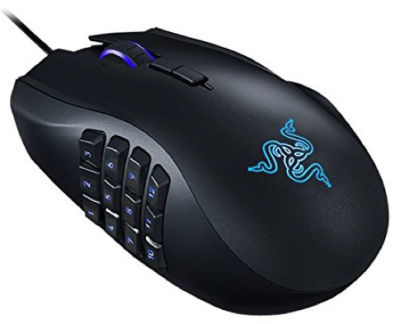
Talk of War of Thunder, World of Warships, and League of Legends, there are skills you need to employ fast and accurately. Mice designed for these games come with up to twelve thumb buttons for allocating skills and so that you can remain competitive.
- What About a Customizable Mouse?
The sky is the limit customizable mice. They cost more than regular gaming mice but are worth it in serious competitions. You can personalize the palm grip, the keys, and they can play any game.
- Optical vs. Laser Sensors
The only thing you want to be concerned about is whether your mouse will track on the particular surface you plan on using it. Otherwise optical and laser sensors work perfectly as long as it is used on its ideal surface.
An optical mouse track on dull and rough surfaces while laser mice can be used on all surfaces including glossy ones. With advanced technology, more and more optical mice are using infrared LEDs so they can track on more surfaces.
- Syncing your Mouse with Other Peripherals
For improved gaming, you will want to have the same software on your mouse, keyboard, headset, etc. This factor is a consideration if you are using peripherals from the same brand say Razer or Logitech.
3. Choosing a Mouse Pad
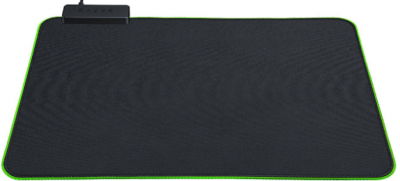
After you have decided on a good gaming mouse, the next thing is pairing it up with an equally appealing mouse pad. An ideal mouse pad eliminates fatigue as it brings less hassle with the mouse against the surface. A comfortable hand means a winning mind as your focus is all in the game.
- What Features to look for in a Gaming Mouse Pad?
- The surface of the Pad
A mouse pad should be optimized for speed and control while providing a comfortable glide with minimal wear to the mouse’s feet. High-end gaming pads minimize surface friction, are smooth and well-cushioned, and absorb vibrations.
- Thickness and Size
The standard mouse pad is usually 3mm thick, but you can get slim 2mm pads and thick 5mm pads. The idea here is to balance the desktop and the mouse pad such that it is not too thin you feel the hard surface beneath you or too soft it keeps on sliding on glossy tops.
Small pads are for squeezed spaces while large ones can accommodate even your keyboard to give you a generally even surface.
- Durability
Be sure to examine the stitching, weaving, and type of fabric as they indicate the durability of a mouse pad.
4. Gaming Monitor
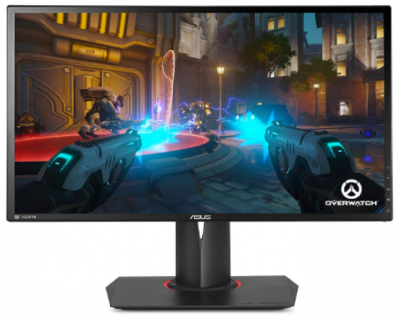
It’s all about your preference, but there are a few features you need to put into consideration before choosing a gaming monitor.
- Resolution and Panel Size
A good monitor gives you the best visuals all enabled by the resolution on your monitor. For gaming, a big-sized or curved monitor is always a welcome feature. You will want to pair it with a minimum resolution of 1080pixels which is full HD.
For improved performance, you can choose between 1440 (2K) and 2160 (4K). The higher the resolution, the more details, and clarity you will see on your monitor.
That said, you will need to consider your GPU power before picking a monitor based on resolution. 4K monitors are considered future-proof and most recommended for gamers. This is because they 2K and FHD (1080p) models sometime come with hardware limitations and unable to push GPU refresh rates.
- Refresh Rate
A high refresh rate is desirable in gaming monitors so is a fast pixel response. Here you are looking a 2ms pixel response that prevents smearing of images. The refresh rate determines how many times the screen refreshes in a second.
Monitors that have 60Hz refresh rate are slower than 144Hz and 240Hz refresh rates. As such, fast-moving images may appear chopped on the low refresh rate monitor as opposed to the 240Hz refresh rate monitor.
- Do you Need G-Syn and Free-Sync?
This is a new synchronizing technology that helps to eliminate input lag and tearing in fast-action games. This technology hands the screen refresh rate to the GPU so that it can vary the refresh rate according to the game you are playing. Such monitors use Nvidia G-Sync or AMD’s Free Sync parts.
- Panel Technology
You will find Twisted Nematic (TN), In-Plane Switching (IPS), and Vertical Alignment (VA) panels. IPS have high-quality colors as well as wide viewing angles and impressive gray-scale performance.
TN panels, on the other hand, have high refresh rates and fast pixel responses but they can’t compete with IPS panels on the color clarity. VA panels come with bright colors, high contrast ratio, and can display deep blacks.
- Connectors
A gaming monitor will support different types of video inputs. These include at least dual HDMI 1.4/2.0, DisplayPort 1.4, 5, audio out, 3.5mm audio in, DVI, and USB ports. You should be able to connect your PC as well as other gaming consoles and peripherals like a gaming sound system.
5. Gaming Headsets
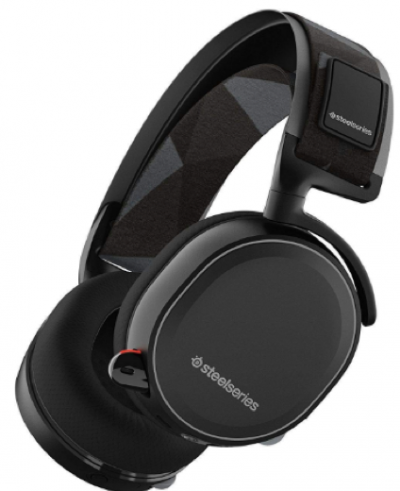
Clear, high-quality audio makes a good gaming headset, but that’s not the only thing that matters. You have to check out the platform compatibility and your comfort in the process.
- Platform Compatibility
It is the first consideration you need to make since some can connect to Xbox while others Mac, PC, PS4, and other platforms.
- Sound Quality
Good sound means a world of interacting with in-game sounds and the environment without glitches. You will want to hear footsteps, sirens, gunfire and the distance from your position as clear as possible. Whether in competitive or home gaming, superior sound is a must.
- Comfort
A non-intrusive model works great for those who spend hours gaming.
You may also want to consider between wired and wireless headsets. If you play on your desktop, a wired model presents lots of functionality and value. But if you move around, you will want to minimize the wires that tag along.
Note that; wired and wireless headsets have indiscernible sound quality.
- Microphone
A boom mic is usually attached to many gaming headsets. The quality of the mice also contributes to your gaming mic. You may want to direct a game, or just trash talk your opponents to dim their spirits. With a good mic, noise cancellation is a must have while being able to pick relevant sound from up to 8 inches away.
- Open vs. Closed Headsets
Open headsets enable you to remain aware of the surrounding environment while closed headsets shut out noise so that you are in the game with no-outside noise distracting your action.
6. Choosing a perfect router for gaming
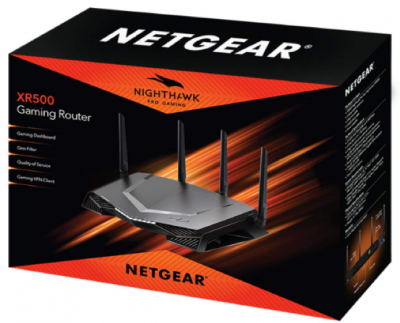
A gaming router is an essential piece in your gaming PC setup. If you love to play online or browse and game at the same time, your home network will benefit with the ideal model for your needs.
Unfortunately, wireless routers can be expensive that’s why you will want to make the suitable choice the first time around.
Features to Consider
- Dual vs. Tri-band Routers
A dual-band router has a 2.4Ghz and 5GHz frequency while a tri-band has a 2.4GHz frequency and two 5Ghz frequencies.
Dual-band routers are for households with few demanding gadgets like a gaming PC, smartphones, laptops, and tablets used for streaming and browsing. But if you have more than a few gaming consoles and your house is large, a tri-band router is ideal.
The 2.4Ghz frequency has a long range while the 5Ghz has fast speeds. Creating the correct balance will offer you the best out of your gaming router.
- QoS (Quality of Service)
Another important feature is the QoS. It is a setting that allows you to prioritize bandwidth to the devices that needs more of it than others. As such, you can select your gaming PC to be among them before you pass it on to music streamers and online surfers.
If you have multiple online gamers, you will be able to allocate specific bandwidth to each one of them for lag-free gaming.
- A Simple User Interface
You don’t want to hassle with the settings each time you want to change some functions. With brands like NetGear, they use the DUMAOS interface that is interactive and easy to understand even for beginners. It lets you know the PCs with the most bandwidth, the parental controls, access to guest networks, internet, and Wi-Fi status with less fuss.
- Other Features
MU-MIMO and beamforming technologies are additional but important specs in gaming routers. With MU-MIMO (Multi-User Multi Input Multi Output) the router allows simultaneous data streaming to many users.
Beamforming is a technology that helps to direct signals to a certain client instead of in different directions. It improves throughput in the process.
Conclusion
Finally, it’s been a long post but what now remains is putting everything together knowing you have picked the right hardware in your big undertaking. We hope we’ve covered what you wanted to see and if not, you can always leave us a comment on what else to include.
Remember that the CPU and GPU are the most important components while building your PC from scratch. Make only the compromises you know you can upgrade like the memory. But not the power. And, it’s not a must to get a sound card from the very start, it’s something you can come back to after a while.
